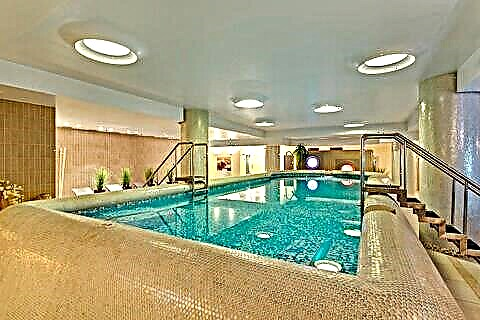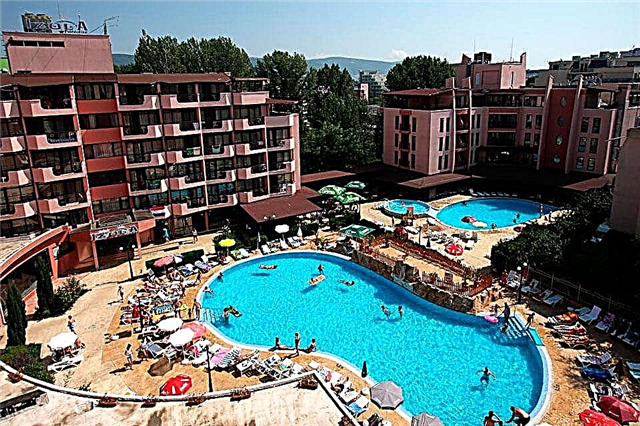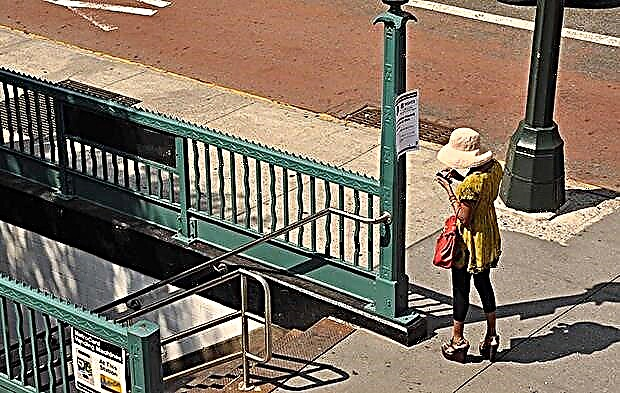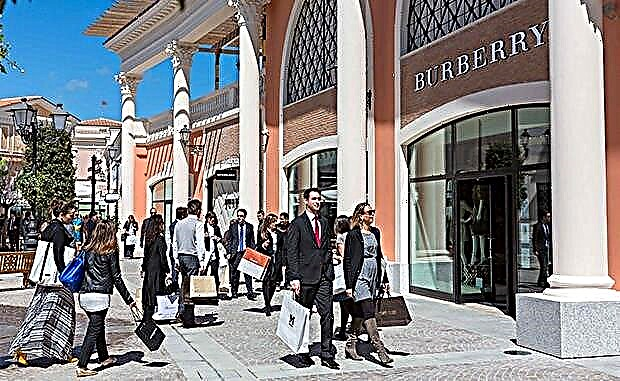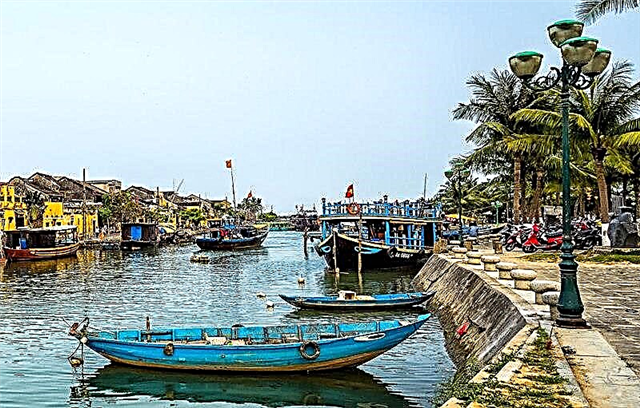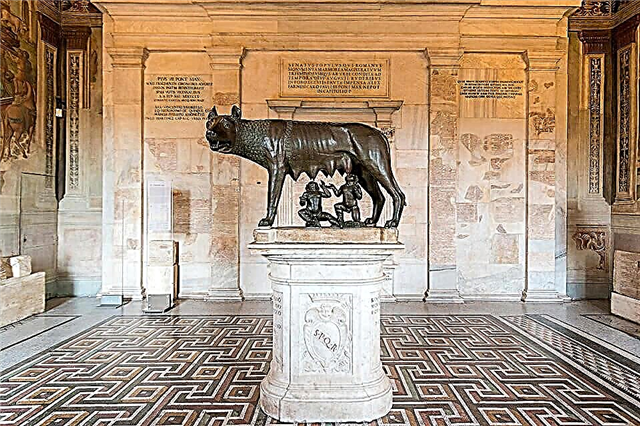Founded on seven hills, the Eternal City attracts tourists with traditional attractions, including the Colosseum, unique Roman fountains, the Pantheon, Castel Sant'Angelo and many other equally famous tourist sites of the Italian capital. At the same time, tourists undeservedly pay less attention to visiting the Roman hills than to the famous sights. However, the hills of Rome should not be ignored, since each of them is characterized by its own unique history, peculiar energy, and also has its own no less significant sights.
Capitol

Despite its insignificant height and not very vast territory, it is rightfully considered the heart of Ancient Rome, since it was this part of the city that was considered the center of the political and religious life of this ancient state. In those distant times, temples towered on the territory in which the ancient Roman gods were worshiped: Jupiter, Juno and Minerva, as well as Juno Moneta. For many centuries of its existence, most of the temple buildings fell into disrepair. Therefore, in the 16th century, the dilapidated architectural complex of the Capitol began to be rebuilt.

The famous Michelangelo was involved in the design of many famous architectural structures in this part of Rome. According to his project, a marble staircase was created, on both sides of which were installed equestrian sculptures of the mythical twin brothers Castor and Pollux, which amaze visitors of these places with their beauty today. Michelangelo did a great job, creating a unique image of the Capitoline Square and designing the magnificent palaces of the Palazzo Nuovo and the Palace of the Conservatives, as well as the facade of the Palace of the Senators, erected on the site of the dilapidated ancient Roman state archive. Most visitors to the hill tend to admire the statue of the goddess Minerva, who adorns the fountain and towers in front of the Palace of the Senators.
Colosseum, Roman Forum, Palatine Hill with one ticket
Time entrance to St. Peter's Basilica with audio guide
Fast track entry to the Vatican Museums and Sistine Chapel
Borghese Gallery: Reserved Entrance Ticket
Skip-the-line: Museums, Sistine Chapel, St. Peter's Basilica
Rome: hop-on hop-off sightseeing bus tour
Rome bus ticket: 24, 48 or 72 hours
St. Peter's Basilica with Dome Climb and Crypt Visit
Guests rush to visit the Palace of the Conservatives in order to see with their own eyes the huge sculptures of the head and hands of Constantine - fragments of a huge 12-meter sculpture of this emperor. In the center there is a copy of the sculpture of the famous Roman emperor Marcus Aurelius, created back in 176 by an unknown master. This work surprisingly escaped destruction in those troubled times, when pagan idols were indiscriminately destroyed, since the sculpture of Marcus Aurelius was banally confused with the statue of Constantine. And the original of this legendary statue is carefully preserved in the Capitoline Museum.

In the Palace you can see the symbol of Rome - a bronze statue of the legendary Capitoline she-wolf, who nurtured the founders of the Eternal City, brothers Romulus and Remus. Visitors to the art gallery will not remain indifferent to the canvases of famous Italian artists. If you climb up another rather steep staircase, you can find yourself at the Basilica of Santa Maria in Araceli. The luxurious decoration of its interiors will not leave anyone indifferent. Not far from the basilica there is an observation deck and a cafe, where visitors not only admire the magnificent views of the city opening from here, but also do not miss the opportunity to feed the seagulls. Feathered regulars of the cafe are happy to pose in front of the cameras and feast on the delicacies offered by tourists.
Quirinal

Ranked second in importance. Its name is associated with the name of the god of war Quirin. Unlike warlike Mars, it is believed that Quirin sought to resolve serious conflicts through diplomacy. Roman patricians built holiday villas here, as here you could hide from the summer heat and feel the breath of a refreshing light breeze.

Perhaps that is why the hill was attracted by the creator of the Gregorian calendar, Pope Gregory XIII, who ordered the construction of the Quirinal Palace on this place. The construction work took two centuries to complete. During this time, many famous Italian masters have had a hand in the creation, among which are Lorenzo Bernini, Martino Longhi and Domenico Fontana. The palace remains to this day the most imposing and most important building built in the Baroque style.

Nearby are luxurious classic-style gardens. On Sundays, access to some of the interior rooms of the palace is open, in particular to the Royal Hall, decorated with amazingly beautiful frescoes. On the Quirinal Hill, you can see the famous fountains, graceful antique sculptures, exotic flowering plants and beautiful gazebos dating back to the 16th century. In addition, many modern boutiques, cafes and comfortable hotels give this place a modern look and allow tourists to relax after numerous excursions.
Viminal

During the time of the Empire, this place was mainly inhabited by commoners. Perhaps that is why this hill was covered with thickets of willow, and among the Romans it was called "Willow Hill". A camp was located on its territory, in which the praetorians lived - the emperor's personal guards. In addition to the residential houses of ordinary citizens, the Baths of Diocletian functioned here, accommodating more than 3 thousand people.
In addition to water procedures on the vast territory of Thermes, one could visit the library, stroll through the gardens and admire the fountains. Today, on the site of the former Thermes, there is the Termini train station. Time has not spared most of the ancient buildings, but the Church of Santa Maria degli Angeli, designed by Michelangelo in the 16th century, has survived and is now the main decoration of the square of the station in Rome.
Esquiline

Esquiline is home to many interesting historical and cultural monuments. In ancient times, ordinary Romans and rootless beggars were buried here. Later, by order of Augustus, the gardens of the Maecenas were built on the site of the cemetery. On the territory of the Esquiline Hill, there is one of the main Catholic churches - the Basilica of Santa Maria Maggiore, decorated with a mosaic of stunning beauty, a gilded ceiling and magnificent chapels. In the reliquary of the local basilica of San Pietro in Vincoli, chains are kept, which, according to the legend of St. Peter, fell apart when the Angel of the Savior appeared in the place of his imprisonment.
Palatine

It is considered the birthplace of the ancient Roman state. There was a legendary cave near the fig tree, near which, according to legend, they found a basket with newborn brothers Romulus and Remus, fed by a she-wolf and raised by the shepherd Faustul. Although much of this story is fictional, some artifacts have survived in part. Among them are the house of Romulus, the Claudius aqueduct and a number of other historically valuable objects.
Celiy

For a long time it served as a place where mostly plebeians lived, but later this part of Rome attracted the aristocrats. Of interest to visitors are the dilapidated temple of the Divine Claudius, the ruins of an insula - an apartment building, mysterious underground corridors and amazingly beautiful frescoes of the Basilica of Santi Giovanni e Paolo. Many of these objects are poorly studied and require close research by specialists.
Avetin

It is famous for its unique objects, among which it is worth noting the Mouth of Truth, known from the movie "Roman Holiday". In addition, on the territory of this hill is the seat of the Knights of Malta. It is interesting that the order is endowed with the status of a separate state. The Aventine Orange Garden complements the serene landscape of this amazing place. The garden has an observation deck from where you can admire the breathtaking panorama of the Italian capital.
In Rome, GuruTurizma recommends the following hotels:
Augusta Lucilla Palace
Rome
5 minutes walk from Repubblica Metro Station

Hotel Milton Roma
Rome
Colosseum - 12 minutes walk

Twentyone Hotel
Rome
15 minutes walk from the Vatican and St. Peter's Basilica
Good based on 2,823 reviews

Book your transfer from Rome airport to your hotel in advance. The driver will meet you with a sign with your name on it, help you with your luggage and take you comfortably to your destination. The price is indicated for a car of a certain class (from economy to Minibus for 19 seats) and does not depend on the number of passengers and the address within the city. You can additionally order a child seat.





